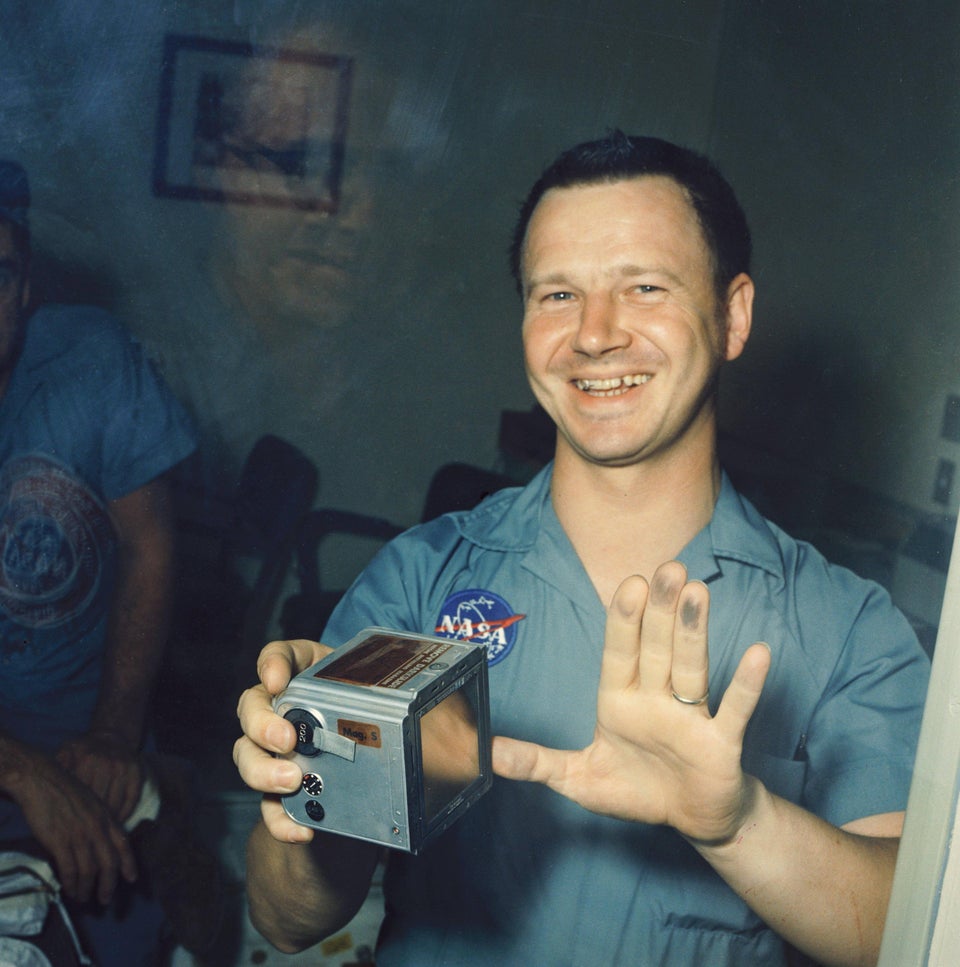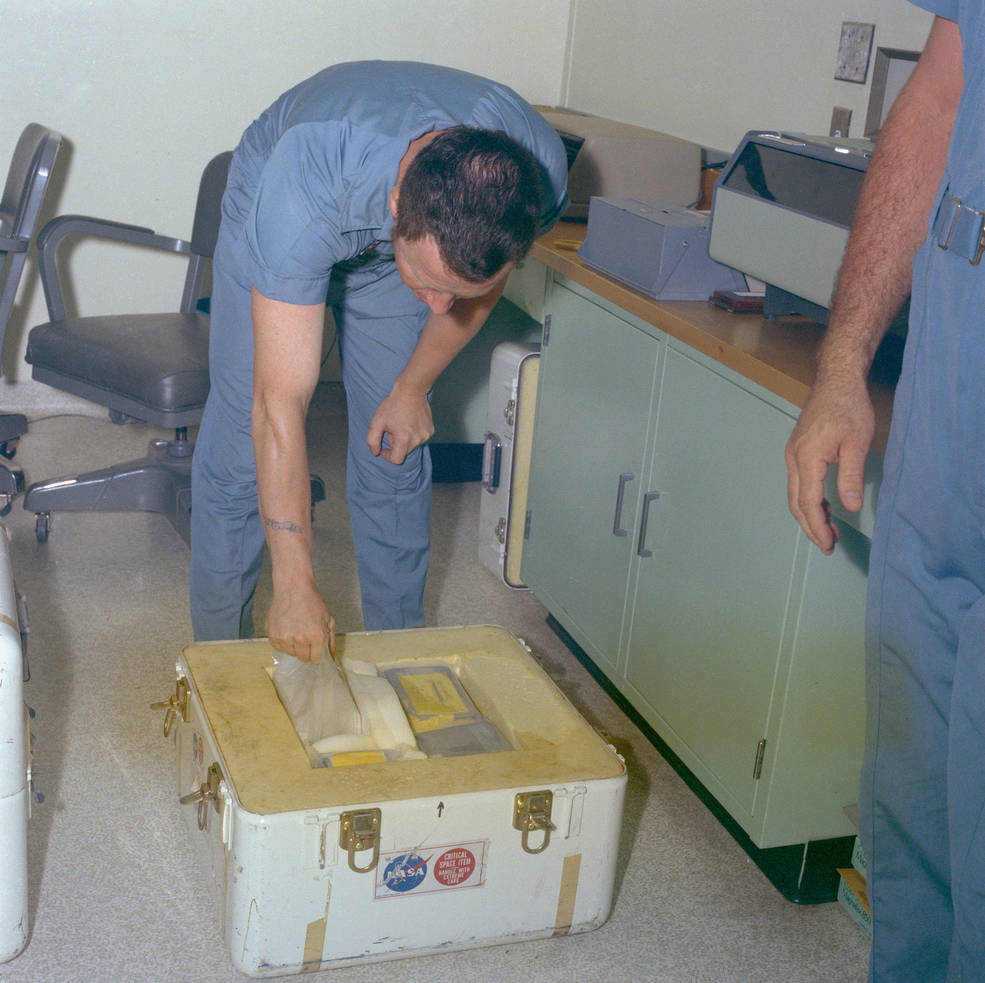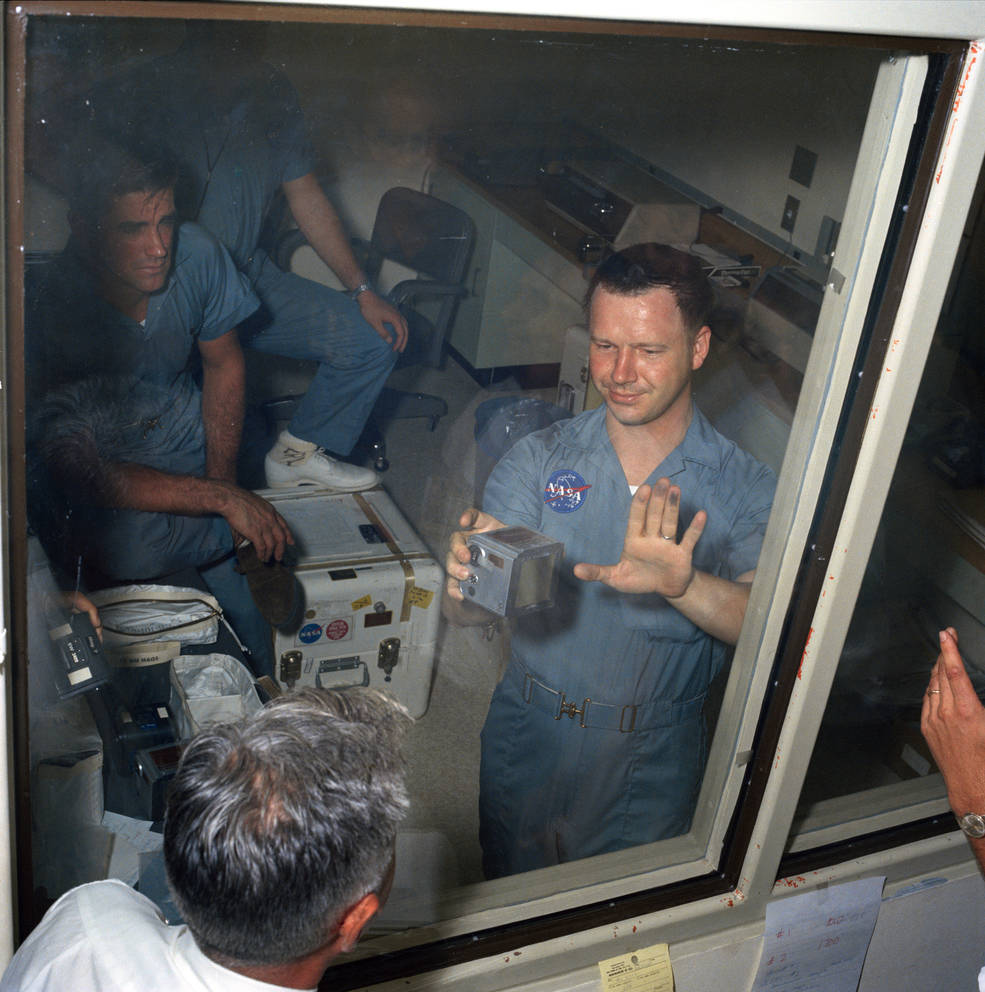How a NASA Photographer Accidentally Touched Moon Dust 50 Years Ago

While the Apollo 11 astronauts waited in quarantine after returning home from the moon, a NASA photographer accidentally became the first person, other than the astronauts themselves, to touch moon dust.
Neil Armstrong, Buzz Aldrin and Michael Collins splashed back down on Earth on July 24, 1969, and were quickly whisked away to quarantine, where they spent the next three weeks being evaluated in case they brought home any "moon bugs." With the astronauts in quarantine, NASA staffers began decontaminating and sorting the astronauts' equipment and the samples that they'd collected.
Now, while Aldrin and Armstrong were on the moon, they took photos using different types of cameras and film, capturing each other and their surrounding lunar environment. But as the astronauts were nearing the end of their extravehicular activity and heading back to climb the ladder back into the lunar module, Armstrong dropped one of the film magazines — a chamber that holds film. He picked it up, packed it into a canister and stored it with the rest of the film. Aldrin then left a handwritten note on the canister containing the dropped magazine, informing whoever handled it that the magazine's surface was dusted with lunar soil.
Related: Apollo 11 at 50: A Complete Guide to the Historic Moon Landing
Unfortunately, when NASA photographer Terry Slezak was unwrapping the film canisters, he didn't heed Aldrin's note. Slezak and his colleagues began unpacking the film, which was double-bagged in plastic containers, from behind a "biological barrier," Slezak recalled in an interview with NASA. Slezak opened the canister with the dropped magazine, and "in there was a note from Buzz Aldrin. He said, 'This is the magazine that Neil [A. Armstrong] had dropped on the surface, but this was the most important magazine,'" Slezak recalled in the interview.
"When I pulled it out it was all covered in this black material — looked like lampblack, almost — it was really dark black with little bright speckly things, which turned out to be little bits of glass from the lunar surface. So everybody said, 'What is that?' I said, 'It's Moon dust. That's the only place it's been.' So they had to shoot a picture of me with the Moon dust on my hand," Slezak said.

Slezak's hands were covered in black lunar soil, and NASA scientists weren't sure if the astronauts could have brought back moon bugs. So, not only did Slezak have to be photographed with his moon-dusted hands, he also had to go through an intense decontamination process.
Get the Space.com Newsletter
Breaking space news, the latest updates on rocket launches, skywatching events and more!

As Slezak explained, "according to protocol, the other people in the room had to leave and I had to strip off my clothing and clean off all of the work surfaces with Clorox bleach, then go to the showers. I didn't really think too much about it at the time. The only thing I was concerned with was this dust, which is so abrasive, it's like carborundum [silicon carbide (SiC)], and I was thinking, 'If this stuff has gotten into the magazine, the film is going to be all scratched.' So that's really what I was worried about."
Luckily, the moon dust didn't make Slezak sick, and the NASA photographer will forever be one of the first people to ever touch moon dust.
Editor's Note: This story has been updated to include that the Armstrong and Aldrin almost certainly touched moon dust while removing their spacesuits and working in the Lunar Module after their spacewalk on the moon.
- Catch These Events Celebrating Apollo 11 Moon Landing's 50th Anniversary
- NASA's Historic Apollo 11 Moon Landing in Pictures
- Reading Apollo 11: The Best New Books About the US Moon Landings
Follow Chelsea Gohd on Twitter @chelsea_gohd. Follow us on Twitter @Spacedotcom and on Facebook.
Join our Space Forums to keep talking space on the latest missions, night sky and more! And if you have a news tip, correction or comment, let us know at: community@space.com.

Chelsea “Foxanne” Gohd joined Space.com in 2018 and is now a Senior Writer, writing about everything from climate change to planetary science and human spaceflight in both articles and on-camera in videos. With a degree in Public Health and biological sciences, Chelsea has written and worked for institutions including the American Museum of Natural History, Scientific American, Discover Magazine Blog, Astronomy Magazine and Live Science. When not writing, editing or filming something space-y, Chelsea "Foxanne" Gohd is writing music and performing as Foxanne, even launching a song to space in 2021 with Inspiration4. You can follow her on Twitter @chelsea_gohd and @foxannemusic.









